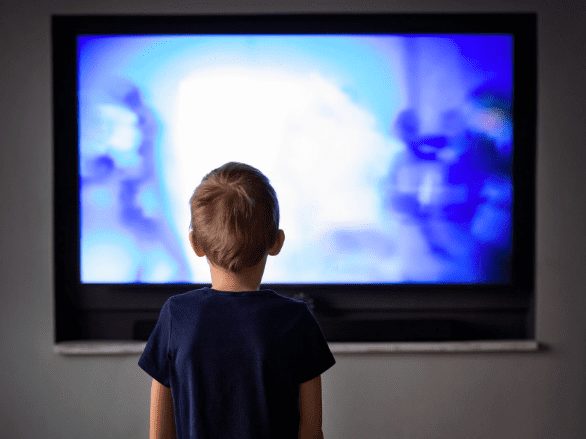Preventing School Shootings: Playing the Mental Health Card is Off the Mark

Posted in: Parenting Concerns
Topics: Hot Topics, Mental Illness + Psychiatric Disorders
Another senseless shooting and more loss of lives. We’ve said it before and we will say it again, our hearts go out to the families in the community of Uvalde. But how many times do we have to say this?
While the individual responsible was clearly disturbed, this issue is not about mental illness. There are millions of Americans with mental health problems. Yet it only takes just one person, fueled by rage and hate, armed with an assault weapon to extinguish many lives in seconds.
In the United States, gun production has tripled since 2000. There are now about 20 million assault rifles in America.The FBI has stated that separatist groups are the greatest threat to domestic terrorism in the United States today, supported by hateful political and media misinformation. This is a deadly combination: guns tailored for war – to kill as many as possible in short order – combined with feelings of fear and anger further fueled by slogans and propaganda. Once and for all, we need to enact effective local and national legislation to enforce gun control.
***
We have all been shaken, once again, by another mass shooting tragedy.
The question we’re all desperately asking, now, is how to prevent future school shootings, and how to prevent what can be viewed as nothing short of pathological normalcy.
Since 2013, there have been at least 630 incidents of gunfire on school grounds. What is so shocking is the lack of action in Congress and the White House to directly address this horrifying event and, indeed, series of events. The fact that this kind of violence is becoming a “normal” event is astounding, outrageous, and terrifying.
While some commentaries speak about prevention efforts aimed at addressing the mental illness of perpetrators, we know from the Safe School Initiative of the Secret Service in 2002 and from many other studies that millions of youth fit the profile of this alleged assailant – angry, aggressive, marginalized, isolated, and having access to firearms, possibly including an assault rifle. We also know that many others have histories of family loss, bullying, and/or turmoil and emotional problems. And most have given warnings of some kind in advance.
But as the Secret Service concluded, this profile characterizes so many millions of adolescents and young adults, that we can never predict who is going to take murderous action. Mental health is easy to see as the target of root cause and preventative efforts. But it misses the boat.
Some have argued that anyone who would do what the latest alleged perpetrator did is, by definition mentally ill. We hear over and over from some politicians and the NRA, that “it’s the individual, not the assault rifle.” This kind of allegation is clearly an over-simplification. Not all murderers have mental illness, though some do for sure.
What we do know is that anyone who threatens or is determined to be a danger to self or others may be committed to a psychiatric facility involuntarily under the Baker Act, and this is where psychiatrists may well be able to help. When there are warning signs of immanent harm, an involuntary psychiatric evaluation with possible commitment to a psychiatric facility is called for.
Beyond mandated psychiatric evaluations, there are strong considerations of limiting access to firearms if one is considered a danger to self or others. In fact, there are petitions to limit access to firearms for any individual with an “extreme protection order”.
This is where mental health professionals can intervene to evaluate an individual; when the public is in danger; and where limitations of firearms due to serious questions of mental illness must be evaluated immediately.
But saying that mental illness in general is the root cause of gun shootings and screening or other preventative measures would be the right and effective course of action to protect the public fails to be an effective or efficient approach. The current and proposed approaches for enhanced background checks, though admirable and necessary, are inherently flawed in many ways.
The fact is that over 20% of youth and adults in the United States have a mental illness. If we choose to go down the path of identifying and caring for mental illness as part of this mission, we need to cast a very wide net – something that would, indeed, be wonderful for our society – but not clearly and directly related to preventing gun violence. 24% of individuals in our nation will at some point in their lives suffer a mental illness. 50% of psychiatric disorders begin before age 14 and 75% begin by age 26.
But these efforts, while praiseworthy, are off the present mark.
Individuals with mental illness are far more likely to be victims of violence than perpetrators. And if we walk down the garden path of blaming mental illness, those who have any history of substance use, mood, anxiety, autistic spectrum, attention deficit disorder and learning disorders, impulse disorders, or a wide range of other problems are at risk of losing their right to bear arms. Background checks are, indeed necessary, but when a psychiatric disorder surfaces, whom do we include and whom do we exclude? Our constitutional right is up for grabs.
What We Can and Should Do
- Now for the low hanging fruit: The fact is, as aptly noted in the New York Times Opinion article, How to Reduce Shootings, there are clear actions that should be taken. The United States has one of the highest homicide rates in the world, the largest arsenal of personal firearms, and the least set of regulations. The argument that placing more restrictions on the procurement and use of firearms and banning military assault rifles threatens the second amendment is patently false. As the author of the NY Times article correctly implies, violating motor vehicle regulations such as speeding infractions, DUIs, failing car inspections, or not using seat belts would eliminate one’s ability to own a car. Sure, these violations may restrict one’s use of a motor vehicle, but the inception and increased restrictions on use of motor vehicles have decreased deaths by 95%. The rules for owning and operating cars has not limited our right or ability to own them.
- The same argument is true for our ability to own firearms – while we have this right, we need far more restrictions. Facts are facts: When the 10-year ban on assault rifles from 1994-2005 was in effect, mass shootings fell by 37%. When it was lifted, since 2005, it rose 183%. New firearm legislation would save lives. Why then, is Congress stalled? Some might disagree noting that the right to bear arms is a Constitutional Right – very different from our right to own cars. However, the 2nd Amendment as originally written, addresses the right to bear arms for a militia to protect the security of a free state. Historically, this has been broadened and interpreted as individual’s right to bear arms for self-defense. The Supreme Court in 2008, uncoupled the original connection with a militia and extended it for other purposes such as self-defense. But it also ruled that “dangerous and unusual weapons” are not protected by the second amendment.
The Issue of Copycat Phenomena and the Media
The other consideration is the need for more resources to study copycat behavior in homicides and mass killings. Research has clearly demonstrated that media coverage of suicides may increase copycat behavior among adolescents for about a two-week period, and there is some evidence to support the same for mass shootings. The evidence is so convincing that the Centers for Disease Control & Prevention (CDC) and American Foundation for Suicide Prevention (AFSP), along with others, developed guidelines for media coverage of suicides to prevent copycat phenomena. They also produced Recommendations for Reporting on Mass Shootings, including instruction to media outlets to avoid reporting that increases misunderstanding and prejudice of mental illness, and to include information about treatment and prevention.
While we do need to ensure that those who carry firearms are mentally sound and need more complete background checks on individuals seeking firearms, this is no time to play the mental health card.
We desperately need to keep our children and society safe. We need action to prevent more devastating events like the one we just endured in Parkland, Florida. There is too much at risk.


 Share
Share Tweet
Tweet





